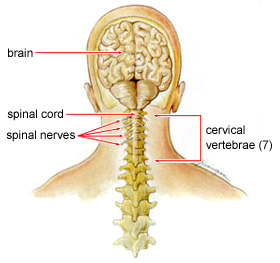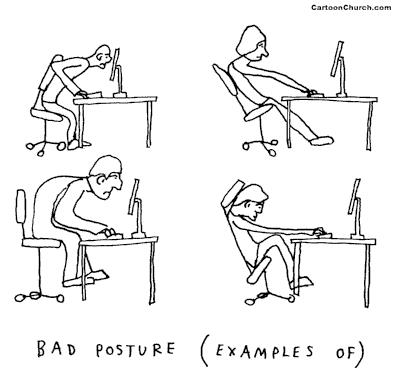

Chronic headaches are defined by how long they persist (15 days or more a month, for at least three months) and how long they last (more than four hours). Up to 50% of headaches can be attributed to neck problems[1]. Chronic headaches with neck pain usually involve a nerve pressure (subluxation) condition within the neck.
Chronic Cervicogenic Headaches
There are seven vertebrae that make up the spine in the neck (the cervical vertebrae) that surround the spinal cord and canal. Between these vertebrae are discs, and nearby pass the nerves of the neck. Within the neck, structures include the skin, neck muscles, arteries, veins, lymph glands, 
Neck Muscle Tension

How is neck pain diagnosed?
To diagnose neck pain a patient’s history of the symptoms would be discussed to assess, intensity, duration, radiation of the pain, any past injury to the neck and past treatments. Aggravating and/or relieving positions or motions are also noted. The neck is examined at rest and in motion. Tenderness is detected during palpation of the neck. An examination of the nervous system is performed to determine whether or not nerve involvement is present.
Further testing of undiagnosed neck pain often includes X-ray evaluation, MRI scan, and electrical tests such as electromyography (EMG) and nerve conduction velocity test (NCV).
Treatment
Take breaks
- Take a break and stretch every 30-60 minutes, if you spend a large amount of time at the computer, on a sewing machine, or reading. Stretches can be prescribed to take your head and neck through a comfortable range of motion. Build up of tension can occur from lack of movement (proprioception). These joint position sensors will create muscle tension if not repeatedly activated. Simply take your neck through a full range of motion to reset the position sensors.
Exercise Helps!
- Low-impact exercise can help relieve pain associated with headaches. If you are prone to dull, throbbing headaches, avoid heavy exercise. Walking and low-impact aerobics can also help.
See a Chiropractor
- Spinal manipulation or adjustments improve spinal function and alleviate postural stress. Research shows that spinal manipulation is an effective treatment option for tension headaches and headaches that originate in the neck.
- Correct any TMJ Dysfunction. The upper teeth should never touch the lowers, except when swallowing. This creates stress at the temporomandibular joints (TMJ) – two joints that connect your jaw to your skull – leading to TMJ irritation and a form of tension headaches.
Fix your Diet
- Food allergies or sensitivities can result in headaches. A program of desensitization or food allergen elimination can be very effective. Your doctor may recommending a diet change and the addition of B complex vitamins.
- Drink at least eight 8-ounce glasses of water a day to help avoid dehydration, which can lead to headaches.
Fix your Posture
- Work postures (ergonomics), exercises and relaxation techniques can also be suggested to relieve recurring joint irritation and tension in the muscles of the neck and upper back.[4]


